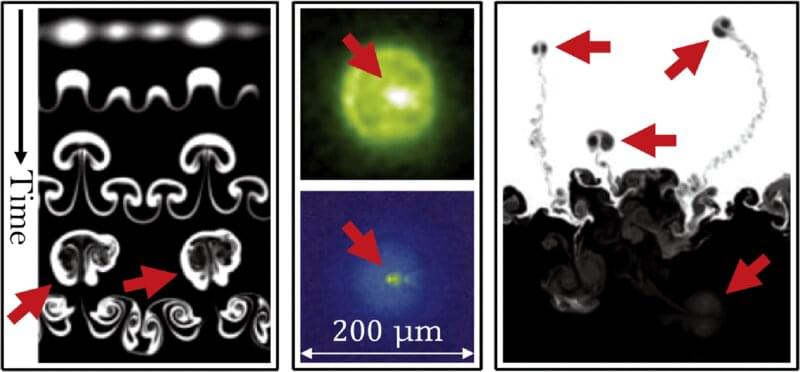Better understanding the formation of swirling, ring-shaped disturbances—known as vortex rings—could help nuclear fusion researchers compress fuel more efficiently, bringing it closer to becoming a viable energy source.
The model developed by researchers at the University of Michigan could aid in the design of the fuel capsule, minimizing the energy lost while trying to ignite the reaction that makes stars shine. In addition, the model could help other engineers who must manage the mixing of fluids after a shock wave passes through, such as those designing supersonic jet engines, as well as physicists trying to understand supernovae.
“These vortex rings move outward from the collapsing star, populating the universe with the materials that will eventually become nebulae, planets and even new stars—and inward during fusion implosions, disrupting the stability of the burning fusion fuel and reducing the efficiency of the reaction,” said Michael Wadas, a doctoral candidate in mechanical engineering at U-M and corresponding author of the study.
